Discovering Your Personal Design Style
What hating on Farmhouse has taught me about interior design I love .
This is a draft of a script I am considering making into a video essay over on The Spiral Lab, and I would love your feedback—please let me know in the comments or a reply email what you think!1
What You can Learn about Your Personal Design Style by Being Curious About Why You Hate Farmhouse*
[*insert the design style you most love to hate here]
I want to propose a design paradox: if you really want to understand design, and create a home that you love, you might want to focus less on what you like, and instead get curious about what you don’t like, and why.
A lot of interior designers, especially on YouTube, are focused mostly on what they “like,” and what they find “tasteful” and supposedly “timeless.” Anything that falls outside of those narrow parameters is “cheap,” and “tacky” and “dated.”
This isn’t very helpful advice for us amateur interior designers, who are just trying to make our homes really work for us. If we want to learn a few things about design so we can make informed decisions for ourselves, “Do I like this design style?” is exactly the wrong question to be asking, at least in the first instance.
Some better questions might be:
What is interesting about this style?
What does it look like at its best, on its own terms?
What do I learn when I judge it at its best, on its own terms?
If I still have a serious aversion to it, what precisely do I dislike?
Being curious about a wide range of design styles and eras can help us discover our own design styles in several ways.
First, we can discover what we truly love by studying what we don’t love and asking “why?”
When we ask, “What do I like?” the possibilities are so open-ended that it can be totally overwhelming. But often we just know instinctively and viscerally that we don’t like something; that’s a good time to ask “What exactly is it that I don’t like about this?” That question can be really effective at pointing us in the direction of what we do like.
For example, I really dislike the relatively recent design style known as Farmhouse, largely popularized by the likes of Chip and Joanna Gaines on their popular HGTV show. Architectural Digest says Farmhouse is
‘really about a lifestyle and bringing that simpler, clean aesthetic to a home, and really focusing on what matters the most,’ … Often defined as chic, comfy, cozy, or warm, it’s a look that’s been made particularly popular in the last decade or so.
Now I will admit that I have long had it in my head that I really dislike the Farmhouse Design Style, but the images in this Architectural Digest piece had me rethinking. They are not exactly my style, but I don’t hate them….
Until I got to that quote above, “that simpler, clean aesthetic,” and then my visceral objection to the Farmhouse style kicked right back in! As someone who grew up in an actual farmhouse in rural Indiana, and whose father was a real, live organic farmer at the forefront of the sustainable agriculture movement in the 1990’s, I know a few things about the so-called farming “lifestyle.” As someone who has spent a fair amount of time on actual small farms, I know that the aesthetic is mostly dirty boots by the door, filthy work clothes in a heap, a kitchen full of food preservation equipment, a big old compost bucket that needs to be emptied, and lots and lots of flies.
Remember that song from childhood, “Skip to my Lou”? Now those were likely real farmers:
Flies in the sugar bowl, shoo fly shoo!
Flies in the sugar bowl, shoo fly shoo!
Flies in the sugar bowl, shoo fly shoo!
Skip to my Lou my darlin’!
There are at least two things I suspect about the difference between a real, working farm house and a Farmhouse Style farm house:
One is that no self-respecting actual farm wife would have barn doors in her home. Barns are for animals, and “were you raised in a barn?” is not a compliment.
The other is that I would bet … the farm (haha) … that most suburban farmhouse style enthusiasts would look down their noses at the design style of most actual farmers as “cheap” not “chic.”
But putting aside that somewhat snarky critique, and accepting the Farmhouse style on its own terms, here are a few things I learned about what I like by going down a little Farmhouse rabbit hole and being curious about what I don’t like:
Having stared at a bunch of photos of the Farmhouse style, when it is well-done on its own terms, one of the things that really stands out for me is how monochromatic it is.
Oof.
It’s all warm neutrals all the time. With maybe a splash of navy blue.
Now, I already knew that I love color, but nothing reinforces that more for me than feeling joy ooze out of me when I spend too much time looking at monochromatic interiors.
One thing that surprised me, though: I really did like the use of natural materials in the Farmhouse aesthetic. Especially all the wood; I love wood. I’m not just a farmer’s daughter, but a carpenter’s daughter too. So I’m definitely down with all that.
But where Farmhouse lost me was the faux beam trend. If faux beams make your heart sing, that’s wonderful—and as it turns out there are tons of tutorials on TikTok about how to make them!
But these faux beams really rub me the wrong way, and when I ask “why?” what I learn about myself is that I kind of hate spaces that pretend to be what they are not. Artifice without irony is not really my thing. I guess this is the source of my visceral aversion to the whole Farmhouse style in the first place, and the more I think about it, as an unmasking autistic, this aversion really makes sense.
I find the built world fascinating and I have a growing special interest in architecture. To me, a beam is a real thing, that has the real purpose of supporting and transfering the weight of floors, ceilings and roofs. Maybe I’m being super autistically literal, but I wouldn’t want to have faux beams, or really faux anything, in my own home.
I guess that answers the “should I put in a faux fireplace?” question…. 🫤
Another thing I discovered down my Farmhouse rabbit hole was that some of what I expected to hate, I didn’t actually hate. What I hated was the Farmhouse-at-its-worst version, not Farmhouse-at-its-best. This is something I’ve noticed that interior design influencers do when talking about a style they “don’t like” because it’s “tacky” or “cheap”—they focus on a design style at its worst, not at its best. This doesn’t strike me as entirely fair.
So for example, I agree with quite a few critics of Farmhouse wall decor. The trend of wall art with cutesy words is … unfortunate. But this is not because I hate text as art, per se. It turns out what I really don’t like is the Targetification of Farmhouse text-as-wall-art: word art that is mass-produced without any attention to craftsmanship, with cutesy, chirpy little sayings. It’s like factory folksy:
I don’t like it, for sure. But when an interior designer YouTuber who I generally admire says “Wall art with words is tacky, just don’t do it,” I’m not going to fall into lock step with this critique of Farmhouse, because I actually love text as art!
For example, I love the artist Cy Twombly, who I discovered when I was researching something called “asemic writing”—which means symbols that look like text but have no actual meaning.
It is “text” just for its own sake, just for the art of it, which unlike mass produced cliches, just delights me.
I suspect that Joanna Gaines would beg to differ.
And I discovered lots of other forms of wall art in the Farmhouse on Pinterest that I do kind of love and am feeling inspired by. Botanicals! Maps! Real Vintage Signs!
Another reason we should be curious about design styles we don’t love is that tastes changes.
This is obviously true on a macro, cultural level—we call these changing tastes in design “trends,” and the trends that seem to stick we call “design eras.” But before a design trend becomes a vaunted “era” it usually has plenty of critics who Just Hate It.
For example, did you know that the iconic Art Deco Chrysler Building in New York City was once panned by critics as tacky and gimmicky? The same is true of many Postmodern buildings. Philadelphia’s One Liberty Center, which was modeled on the Chrysler Building many decades later (and which I wrote about last week), was met with fierce resistance when it was first proposed in the 1980’s. Now it is perhaps the most beloved skyscraper in the Philly skyline.
We as individuals can have personal design eras as well. Our own taste can change over the course of a lifetime. We can outgrow styles we once loved, and styles we once disliked can grow on us.
I remember distinctly the first time I heard the term “mid-century modern,” when a blogger-friend described—lovingly and with pride—the pattern of her formica countertops in the kitchen of her new-to-her Midwestern ranch house. This was probably in the late 90’s or early aughts. My first thought was, “Well, that’s a clever rebranding of a kinda ugly, very boring, totally outdated 1950’s style!”
The 1950’s were a decade that my generation of young people in the 1980’s had some nostalgia for—think Grease and high school “50’s sock hops”—but not one of us in our right minds wanted to actually live in those houses! Those were our grandparent’s houses.
But eventually I did get curious about the revival of this mid-century modern design era, and I have come to appreciate much about its originality, craftsmanship, and beauty. And while I personally wouldn’t want to design my whole house around a mid-century aesthetic, I do have some nods to that era in my own eclectic, maximalist home.
It takes time for a truly satisfying personal design style to emerge, and alongside trusting your instincts and not caring about what other people think, curiosity should be at the heart of that process. And that includes curiosity about design styles you’re pretty sure you don’t like.
Finally, it’s worthwhile studying a design style we don’t like because we might discover something about its ethos that inspires us.
When we ask “what is it trying to do, and does it succeed on its own terms?” we might find that we really admire what it aspires to, even if we don’t particularly love its actual aesthetic.
I think a perfect example of this is Memphis Design, which I’ve written some about before … and which will be the subject of the second essay/video in this “Discovering Your Own Design Style” series—all about rebelliousness and timelessness (they don’t have to be opposed to one another!).
Other topics I’m considering exploring in this series:
~ How art can help you develop your emerging design style.
~ Look to fashion to discover what you like.
~ Architecture as inspiration to help you develop an interior design style.
~ Learning what you like in a thrift store.
~ Balancing disability accommodation with aesthetic.
Can you think of any others? Or are there specific questions about developing a personal design style that you would like me to address? Let me know in the comments below!
I’m interested in expanding our repertoire over at The Spiral Lab, the art and divergent design channel I share with Jesse and Gray. I’m thinking about some videos that are a bit more researched, scripted, and that teach or explain something. And then it occurred to me I could test my scripts out on you guys as actual essays before I make them into video-essays!
I hope this makes you feel more like honored beta-readers, and less like expendable guinea pigs, because that is very much the spirit in which I offer this essay. This is a draft, that I hope will become a video, and I would LOVE your feedback. I’m thinking about a whole series on this topic of discovering your own design style—would that be interesting to you? Any suggestions for revision and/or other topics in this series? Please leave me a comment below or reply to this email with your thoughts!




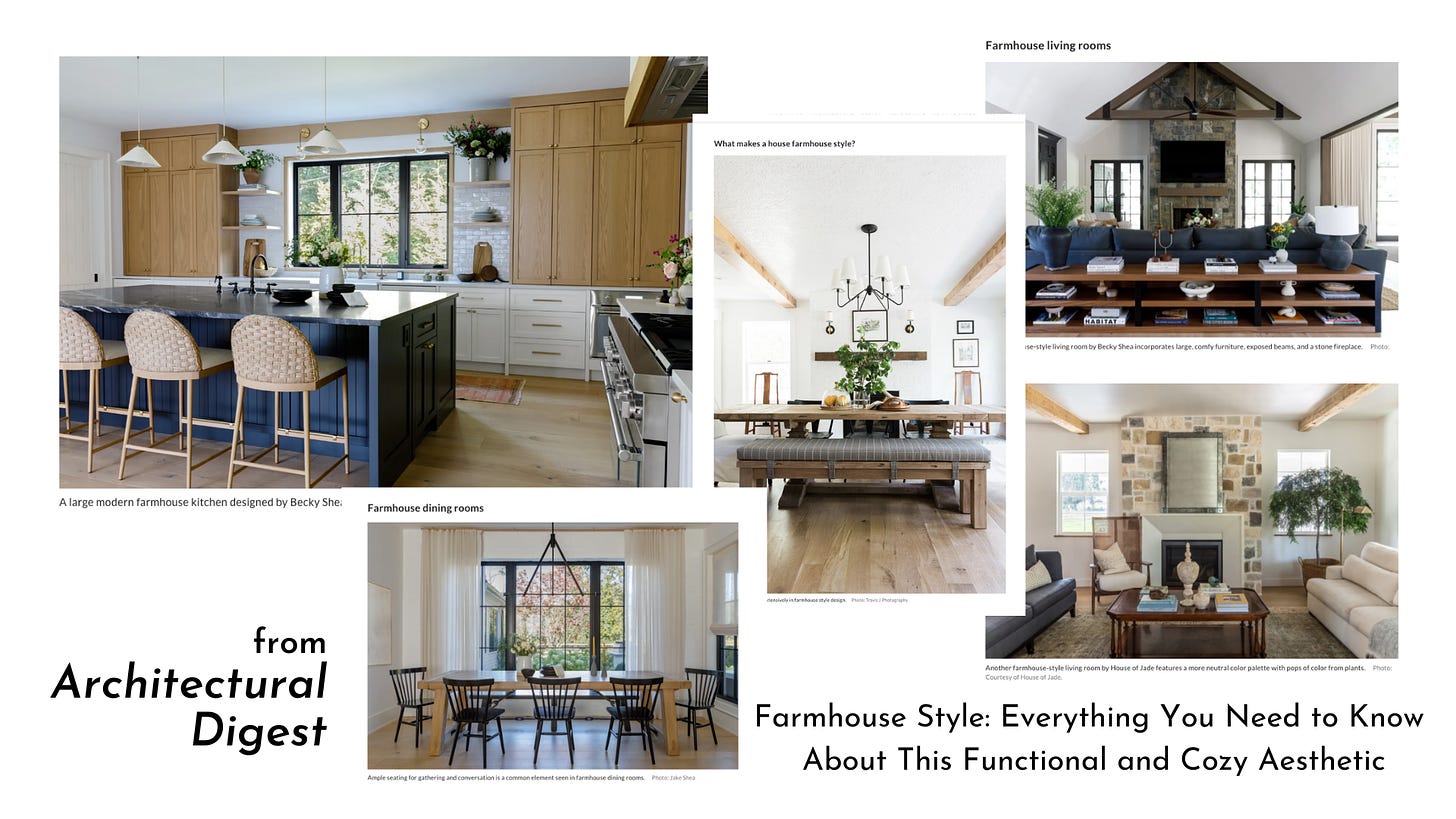
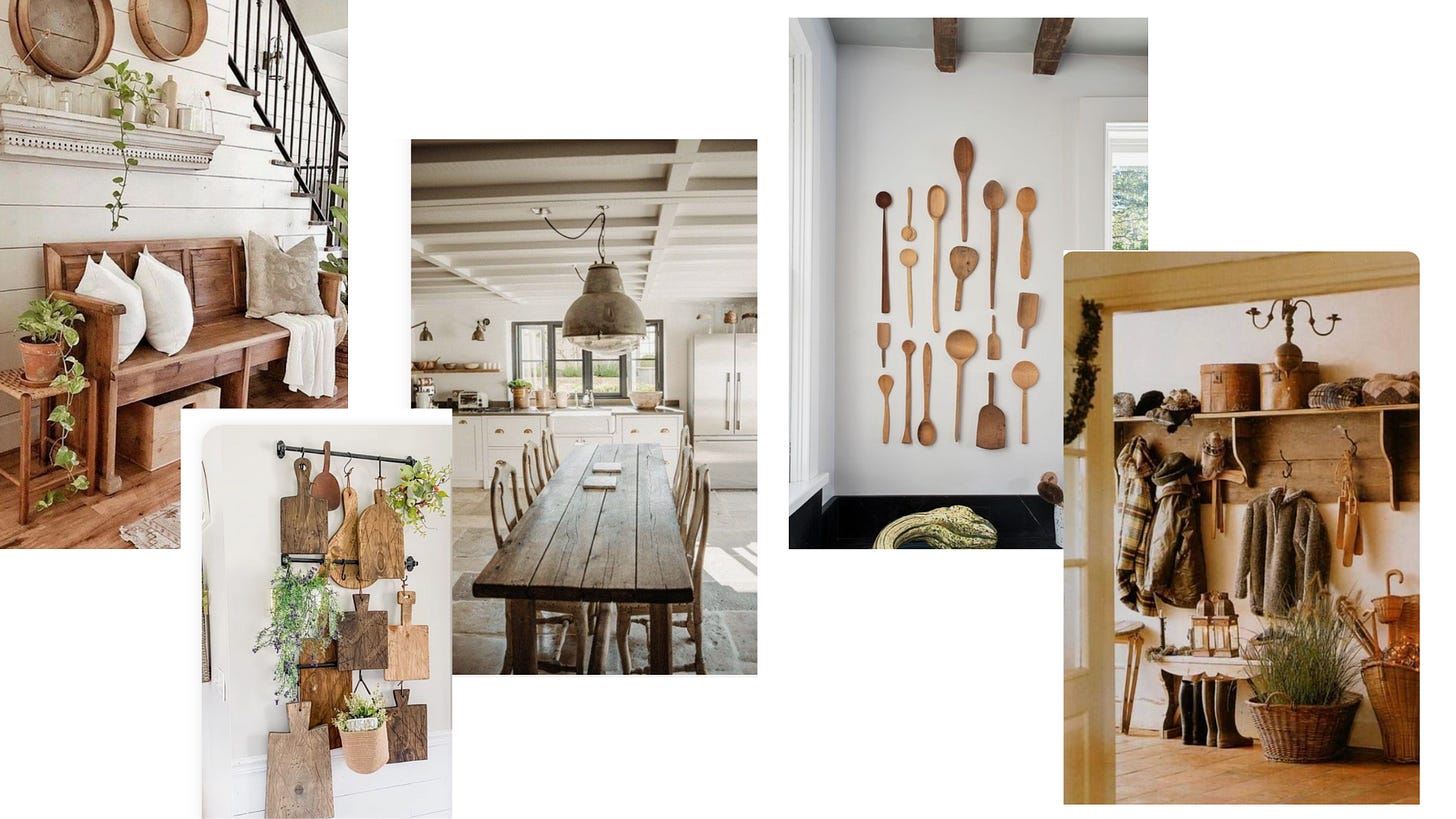
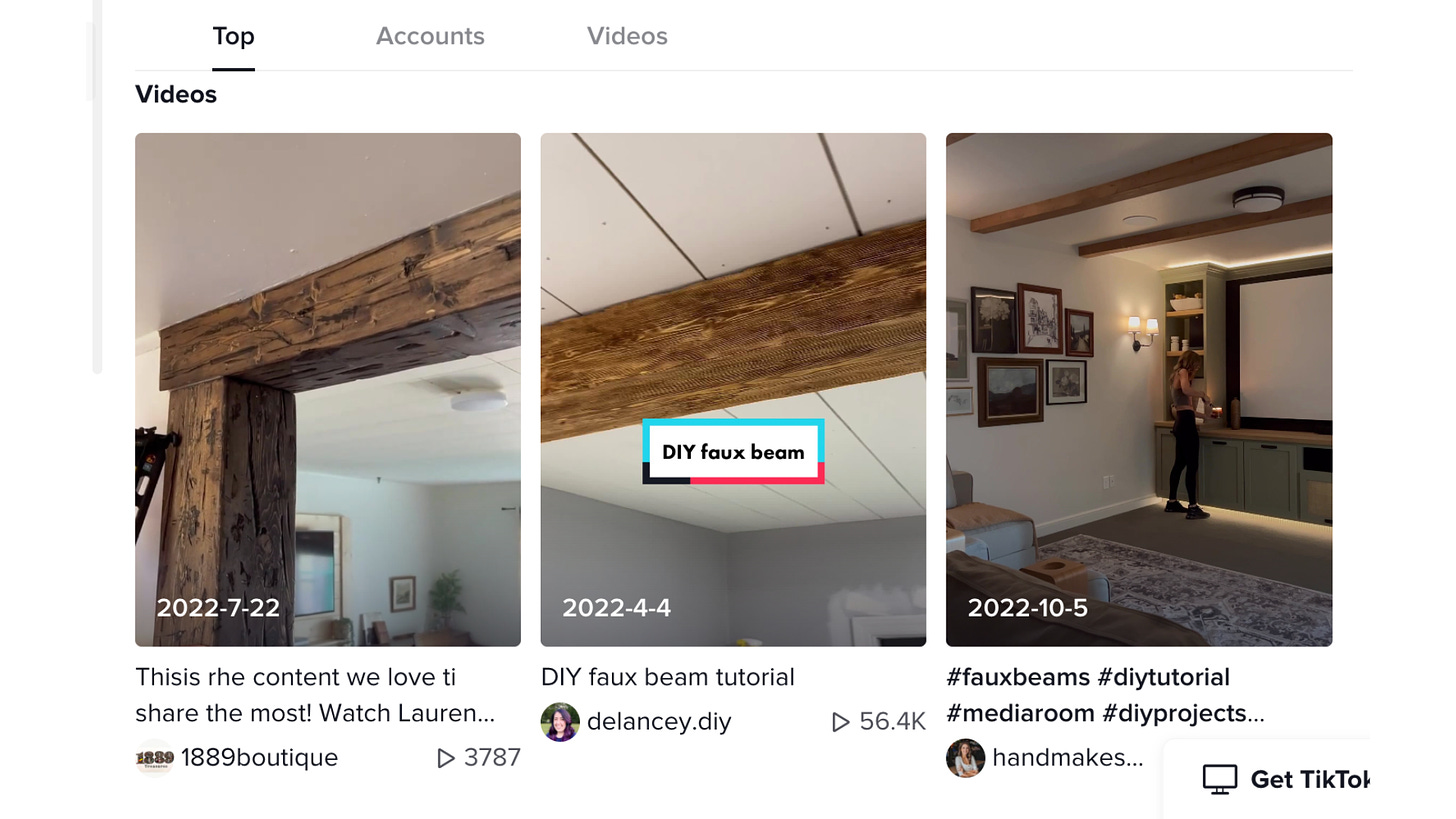
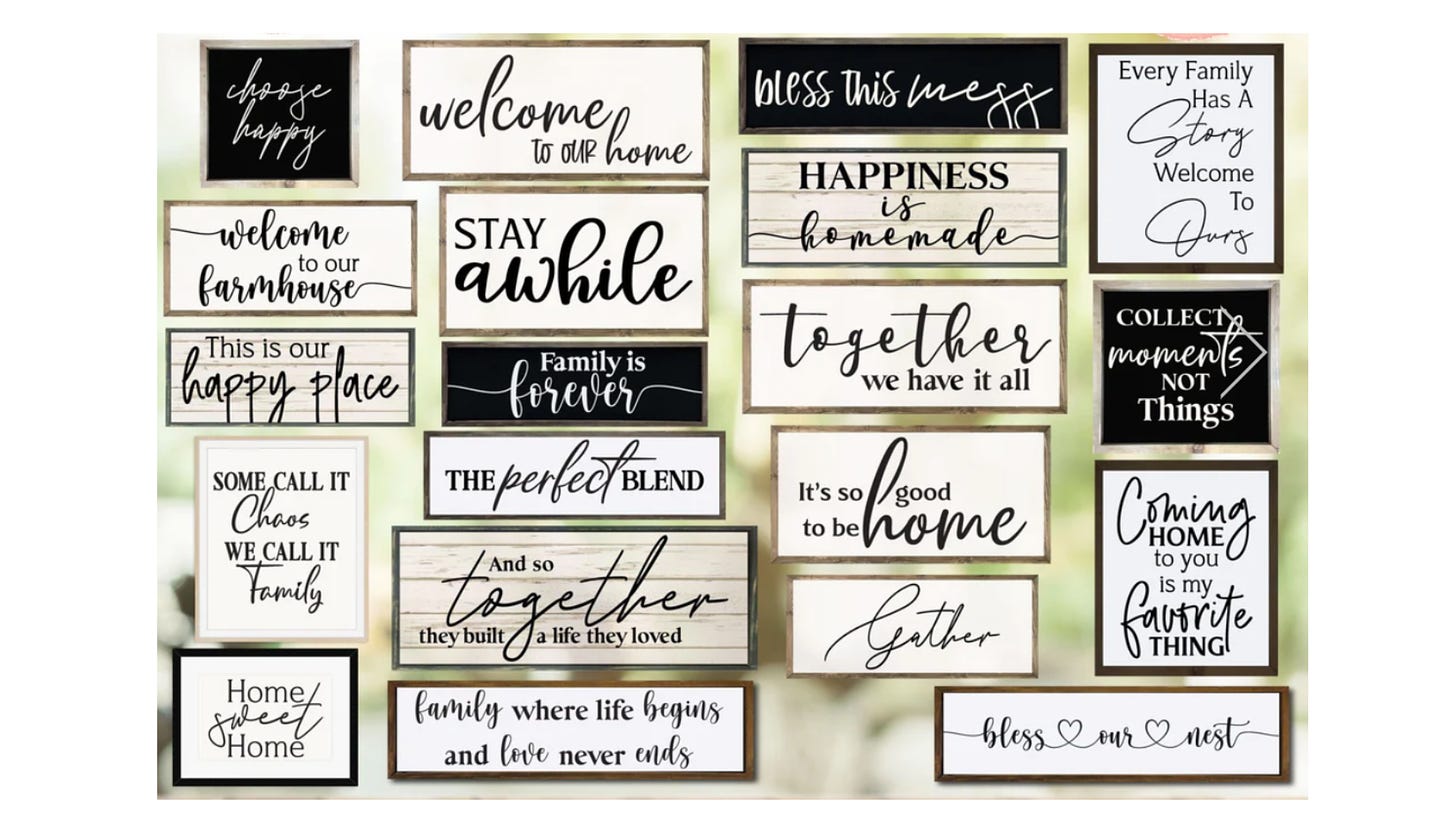
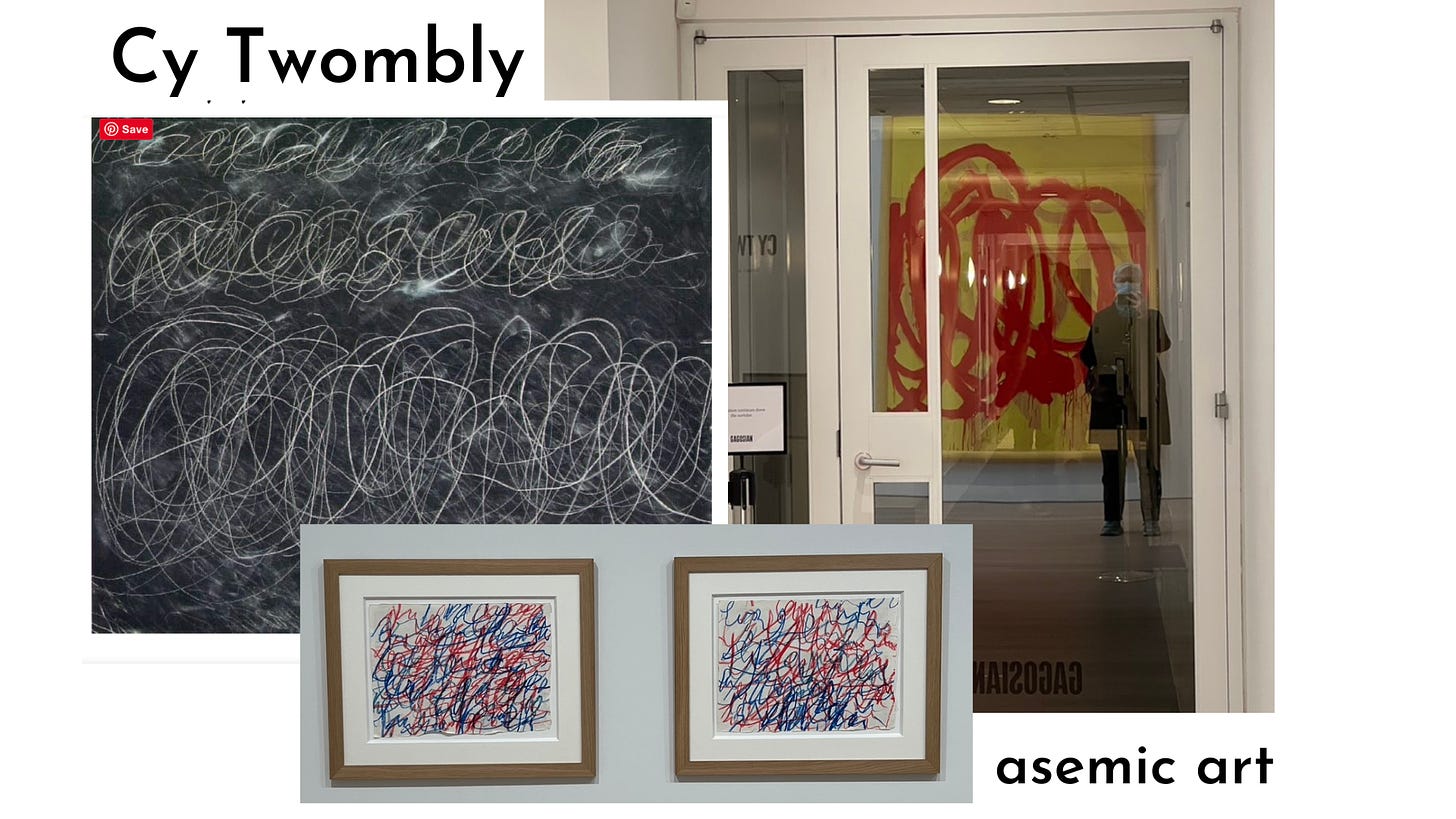
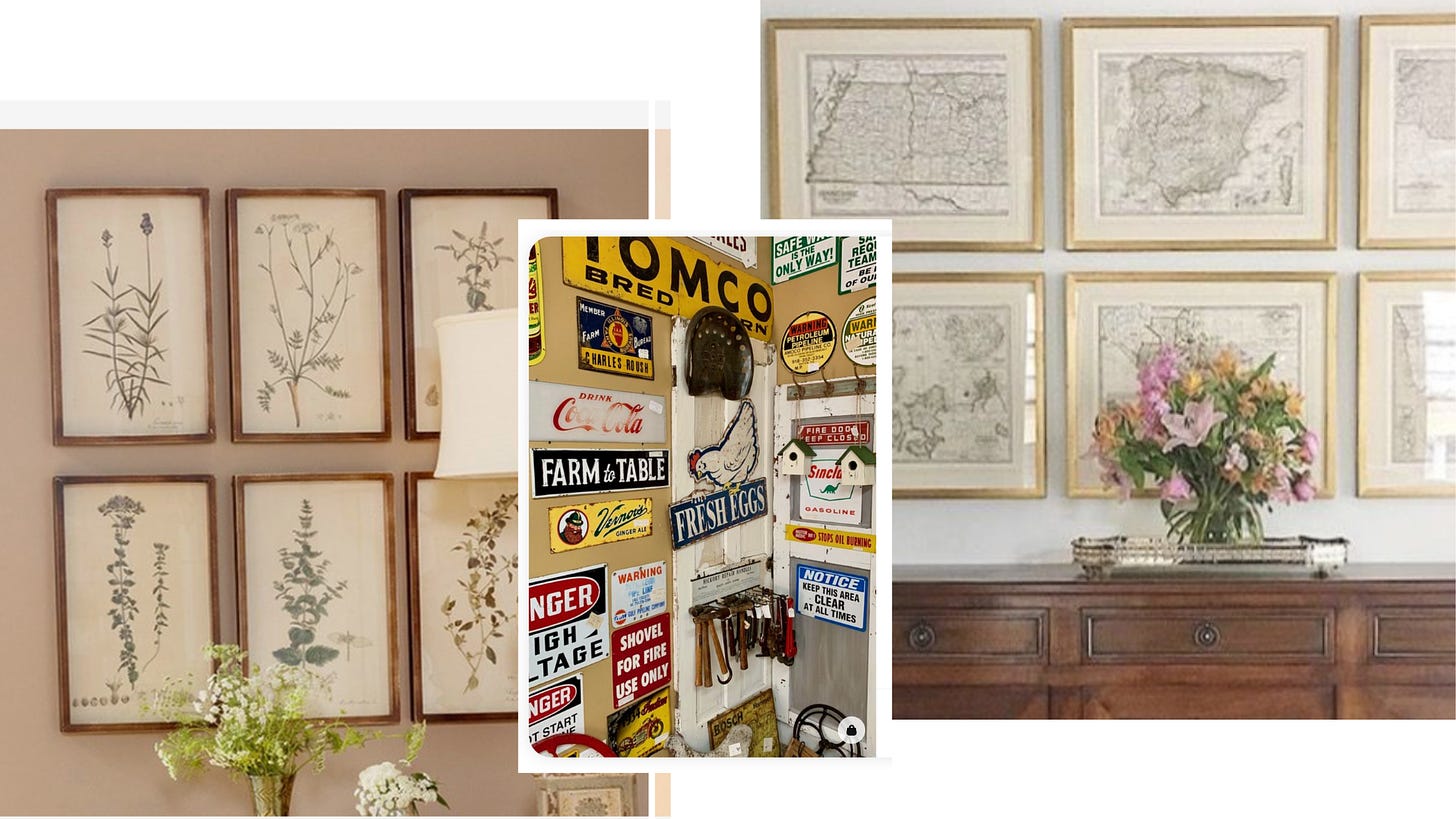
This made me think about food -- it’s so hard to answer when someone asks “what do you like to eat?” but it’s a lot easier when the question is flipped to “what do you not like to eat?”
Thank you for an absolutely lovely read, and a feast for the eyes and the mind -- at least for me, someone who has no idea what my personal design style is yet, or even what I need or like. I do know, at least, that there are many design styles and elements that I strongly dislike! And I have noticed I have a nasty tendency to be overly dismissive or repelled by things that feel uncomfortable for me to be near -- which is all well and good to accept on a sensory level, but gosh, I hate how incurious it makes me. The farmhouse style is one I also tend to loath, mainly because of its associations -- to me it's the interior design of upper middle class republicans and "buckle bunnies" who pretend to have an upbringing and cultural ties that they really do not, mixed with the superficiality and destructiveness of a house's real, good "old bones" that I associate with many HGTV shows. It was nice to see glimmers of the style here that I actually could reasonably like, or at least feel comfortable around.
I'm so looking forward to getting to talk with you more about design. I know for a fact that my environment is a massive determinant of how I feel, and if i can focus or get done any of the things that I yearn to do, but when it comes to solving a space that isn't working, I am completely unmoored. All I know is "no" and "I fucking hate this". It's a bit of a relief to think that is as fair a place as any to start.
Now onto researching ways for me to incorporate more color and warmth into a rental. Because I know that all this default landlord white paint surrounding me is viscerally not it.